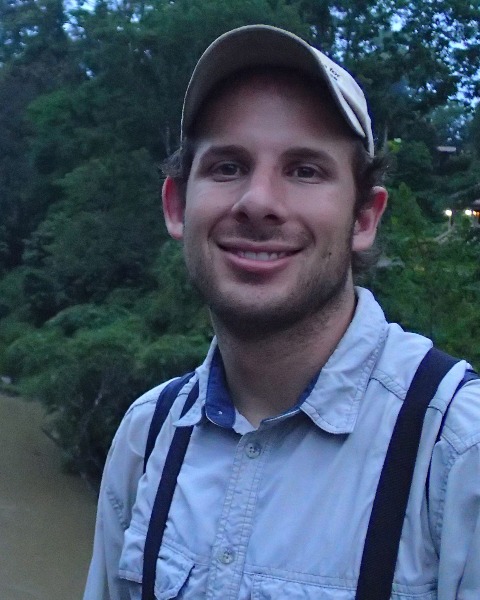Organized Oral Session
OOS 52 - New Approaches to Age-old Problems: Data Science for Pest Ecology at the Landscape Scale
-
RC
Rebecca Chaplin-Kramer
Global Biodiversity Lead Scientist
Global Science, WWF
OAKLAND, California, United States -

Daniel Karp, Ph.D.
Associate Professor
UC Davis
Davis, California, United States
Organizer(s)
Co-Organizer(s)
Data science is contributing to solving many of the world’s problems, from public health to disaster relief, from defense to politics, but we have yet to fully harness it for one major problem that has plagued us for centuries: agricultural pests. The control of insect pests by their natural enemies presents a critical opportunity for sustainable agriculture and more productive, healthier farms. Yet without knowing when and where pests are likely to outbreak, and how well natural enemies can control them, it is difficult for growers to trust or implement this strategy at scale.
Natural and semi-natural ecosystems within agricultural landscapes provide resources in the form of overwintering habitat, alternate hosts, and nectar for crop pests and their enemies alike. The landscape surrounding farms can therefore be a source of critical control agents for crop pests. However, these same habitats can also provide pests with resources and therefore contribute to pest outbreaks. After more than two decades of research, we lack a definitive answer to the question of how surrounding landscapes impact pest control on the farm, suggesting a new approach is needed to understand the spatial dynamics of insect populations. Landscape composition in categorical terms (e.g., crop vs. non-crop) does not appear to be sufficient to consistently explain variation in pest and enemy distributions. Moreover, the small number of fields and years that can be measured in typical academic studies may not provide enough data to detect trends where they exist. Fortunately, large-scale data collection efforts focused on agricultural pests, sponsored by both government and industry, are emerging. Coupling these data with advances in remote sensing technology and analysis may provide a path forward for both understanding and predicting pest population dynamics in agroecosystems.
This session highlights advances, insights gained, and possible emerging frontiers in the landscape ecology of insect dynamics made possible through ecoinformatics, remote-sensing, machine-learning, and other data science approaches. Through partnerships across universities, government agencies, NGOs, and the private sector, we are seeking transdisciplinary solutions to a problem that has been plaguing society for centuries.
Presentations:
-
8:00 AM - 8:15 AM PDTIntegrating field ecology, remote-sensing, and data science to build a living database for biocontrol
Presenting Author: Rebecca Chaplin-Kramer – Global Science, WWF
Co-author: Sara Emery – University of California, Davis
Co-author: Daniel S. Karp, Ph.D. – UC Davis
Co-author: Jay A. Rosenheim – University of California, Davis
Co-author: Richard P. Sharp – SPRING
-
8:15 AM - 8:30 AM PDTRemote-sensing for crop type mapping: advances and applications for modeling pest populations
Presenting Author: Victor Hugo Rohden Prudente – University of Michigan
Co-author: Meha Jain – University of Michigan
-
8:30 AM - 8:45 AM PDTUnderstanding impacts of spatiotemporal crop cover changes on pest control through data and modeling approaches within USDA
Presenting Author: Tatyana A. Rand – USDA-ARS Pest Management Research Unit
Co-author: Erika S. Peirce – USDA Agricultural Research Service
Co-author: Punya Nachappa – Colorado State University
Co-author: Jeffrey D. Bradshaw – University of Nebraska
-
8:45 AM - 9:00 AM PDTForest insect outbreak monitoring and ecology across scales with harmonized field, drone, and satellite data
Presenting Author: Michael J. Koontz – Cooperative Institute for Research in Environmental Sciences
Co-author: Katharyn A. Duffy – Vibrant Planet, PBC/Northern Arizona University
Co-author: Derek J. N. Young – University of California, Davis
-
9:00 AM - 9:15 AM PDTCan data science support transformative change in agricultural systems?
Presenting Author: Claudio Gratton – University of Wisconsin-Madison
Co-author: Nicholas Jordan – University of Minnesota
Co-author: John Strauser – University of Wisconsin-Madison
Co-author: Randy Jackson – University of Wisconsin-Madison
-
9:15 AM - 9:30 AM PDTUnlocking satellite data for field ecologists
Presenting Author: Richard P. Sharp – SPRING
